How to Perform CPR: 6 Easy Steps That Could Save a Life
Advertisement CPR or Cardiopulmonary Resuscitation is a simple first-aid process to revive a person who has stopped breathing. Similar Story In Assam, This Transwoman’s Free Libraries Are Changing How Villages
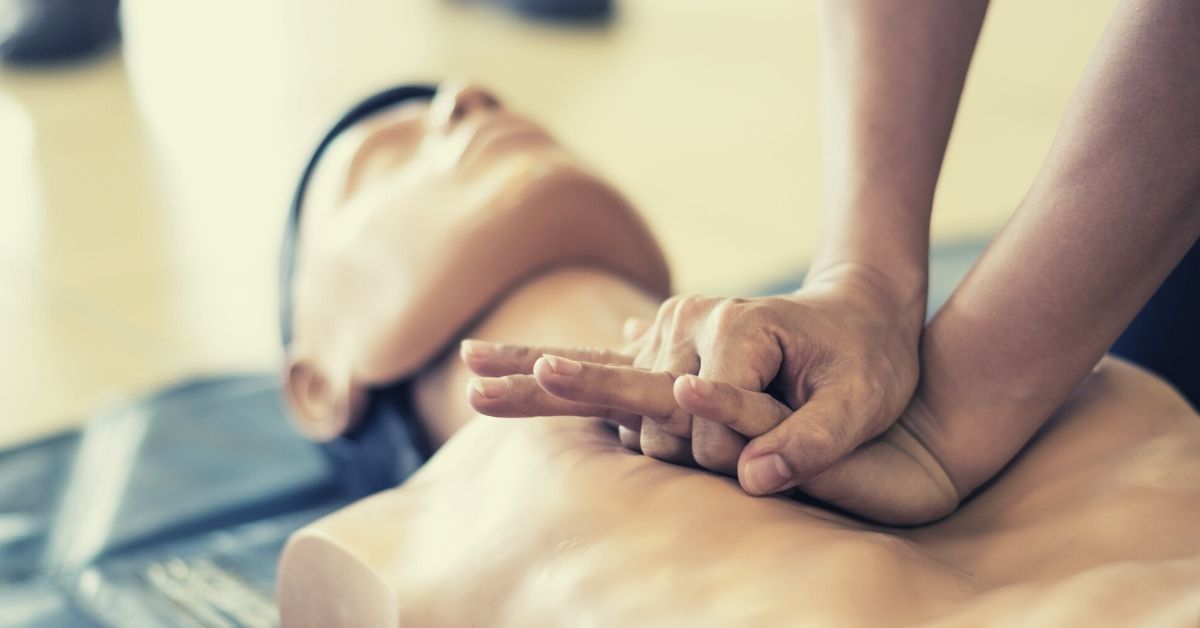
CPR or Cardiopulmonary Resuscitation is a simple first-aid process to revive a person who has stopped breathing.

Similar Story

In Assam, This Transwoman’s Free Libraries Are Changing How Villages See Queer People
Assam’s Rituparna Neog runs Akam Foundation, an NGO that builds free libraries in villages to break barriers around gender, LGBTQ communities and sexuality.
Read more >
This can happen due to a heart attack, a stroke, electrocution, drowning or poisoning. In these situations, their heart stops beating. CPR can help restart their breathing and heartbeat. Studies show that timely CPR, administered even by people from non-medical backgrounds, greatly increases the chance of survival.
So if you see someone keeling over or lying unconscious, call for help and rush to their aid. They may just need CPR! And you may just be able to save a life.
Familiarise yourself with these steps to administer CPR properly so that you can respond promptly and confidently in such a scenario.
Step 1: Call for help

First of all, call or shout for help. Call 112, 102, or 108 for medical assistance or ask someone nearby to do so. Always save emergency numbers on your mobile phone.
- All India: 112
- Medical: 102, 108
- Police: 100
- Fire: 101
Step 2: Preliminary Checks
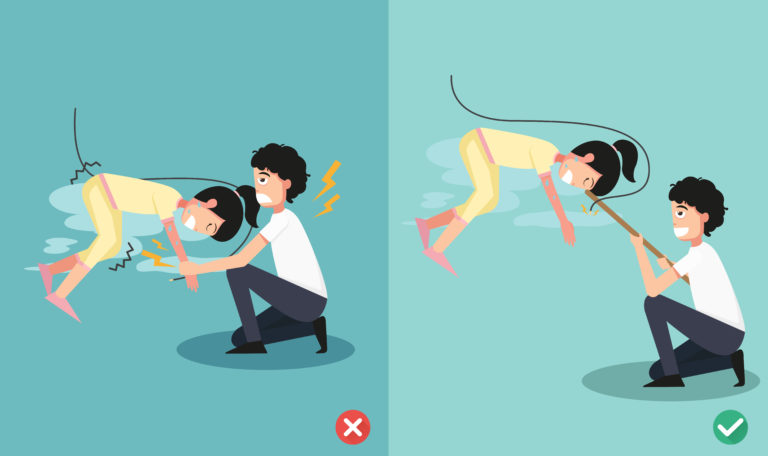
Take stock of the situation quickly.

Similar Story

‘Is It a Girl or a Boy?’: This Doctor’s Small Step Is Changing How Many Families Think About Daughters
The first thing that most patients would ask Dr Nandini Mohta was the baby’s sex. So she started a practice that is changing the way many Indian families think about the birth of a girl child.
Read more >
Ask the person if they need help. If they don’t respond, make sure you that you are both out of harm’s way, such as oncoming traffic, before proceeding to help.
Scan the place for electrical wires or appliances that may have electrocuted the person. If you suspect any electrical danger, turn off power sources using non-conducting material like wood, and take extreme care before touching the person.
Step 3: Open up their airway
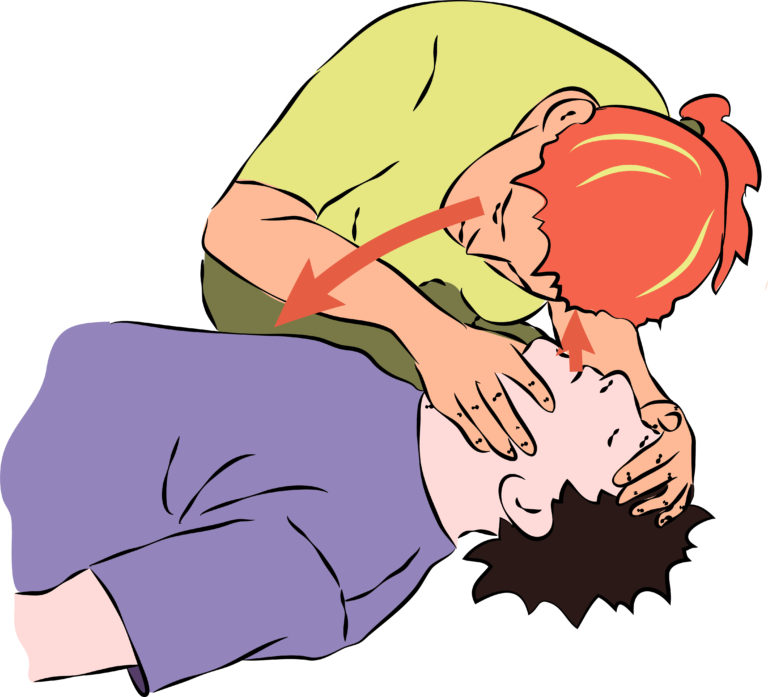
Lay them flat on their back.
Tilt their forehead back with one hand, and lift their chin. Open their mouth and check if anything is obstructing the airway.
Briefly listen for breathing. An occasional gasp does not count. If there is no breathing, start performing CPR.
Step 4: Chest Compressions (30 times)
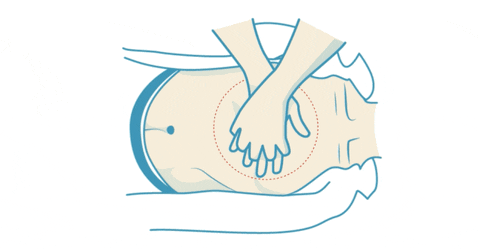
Where: Right on the chest bone. At the centre of an imaginary line joining the nipples.
How: Place the heel of one of your palms on the centre of the chest. Place your other hand over the first one, interlocking fingers. Raise your fingers so they don’t apply unnecessary pressure on the chest or rib cage. Only the heel of your palm should be touching the chest. Lean forward so that your arms are straight above the person’s chest. Push down hard and fast 30 times.
How fast: A little faster than the ticking of the second hand of a clock. The beat of the Bee Gee’s song Stayin’ Alive is a good reference for the speed. Technically, this is 100 compressions per minute.
For infants: You don’t need to apply as much pressure for infants. Place your hand as shown in the image below, instead of the clasp used for adults.

Similar Story

‘Why Me?’: What Patients of Spinal Muscular Atrophy Want India to Learn About Their Condition
From misdiagnosis to social boycott, patients born with the genetic condition called Spinal Muscular Atrophy (SMA) have a lot to deal with. Awareness is the first step to help them.
Read more >
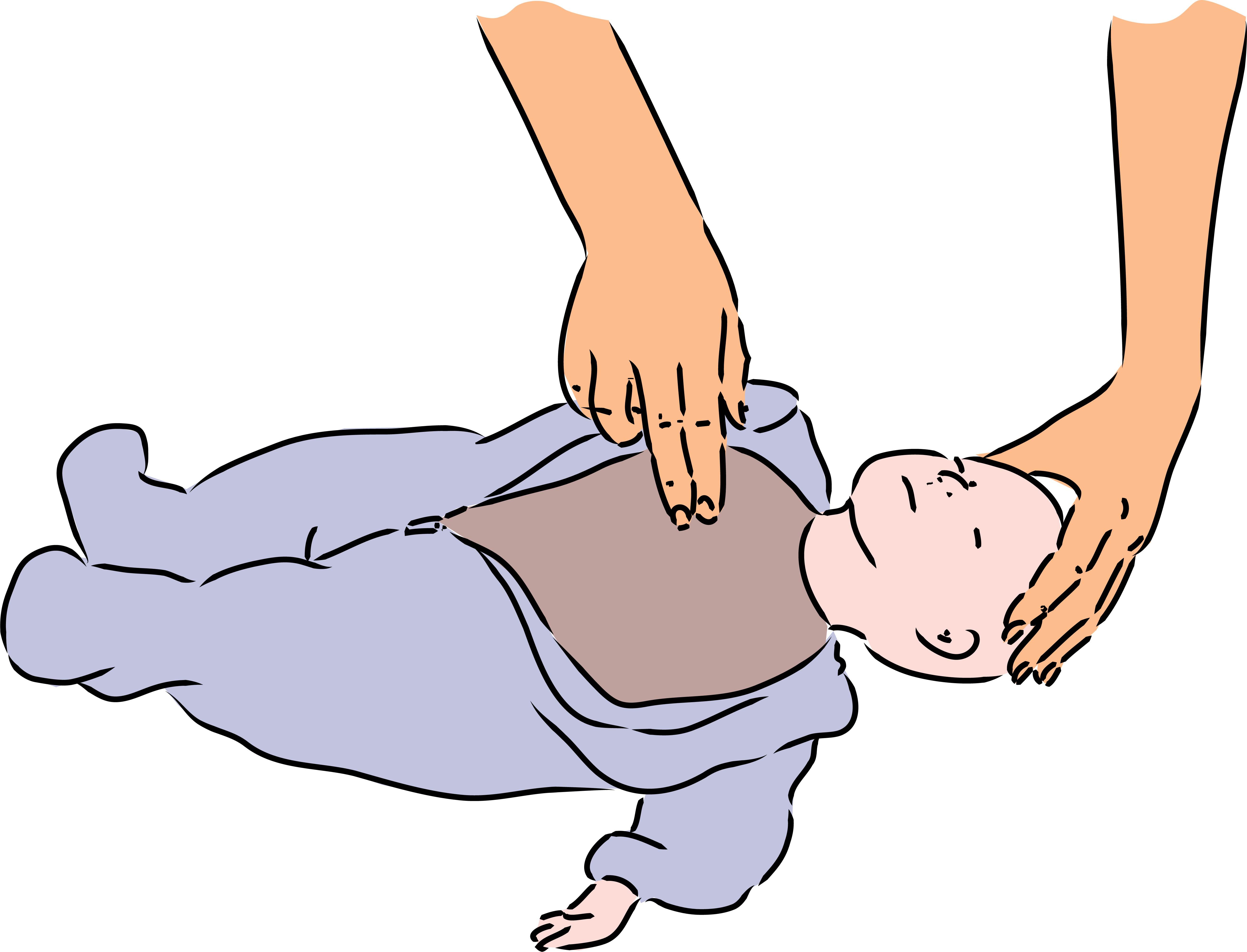
Step 5: Rescue Breaths (2 times)
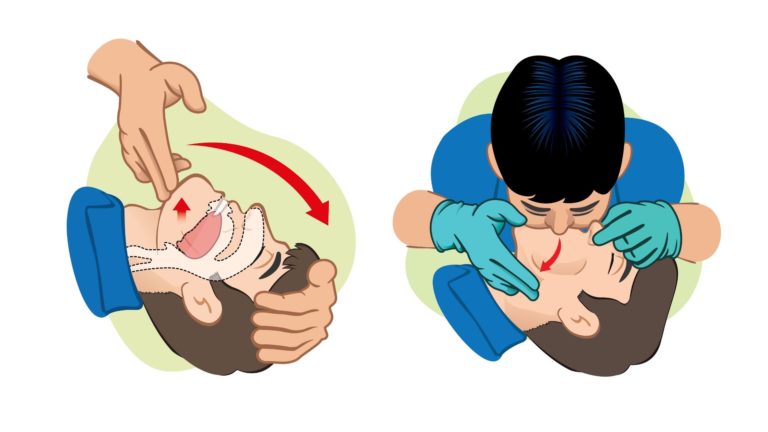
Tilt the person’s head slightly back and lift their chin. Open their mouth, pinch their nose shut and place your mouth fully over theirs. Blow into the person’s mouth. Watch if the chest rises. Repeat two such rescue breaths.
Note: If the chest does not rise with the first breath, tilt the head and try again. If the chest still doesn’t rise, the person may be choking. Check their airway for obstructions.
Step 6: Repeat Compressions & Breaths
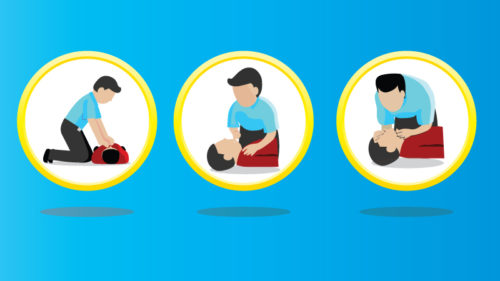
Continue the cycles of 30 chest compressions and 2 rescue breaths, until the person starts breathing or a trained medical professional arrives. It may take up to 20 minutes of CPR before the person is revived.
Note: Do not continue with CPR if the person starts breathing.
SUMMARY
- Call for help. Emergency numbers: 112, 102, or 108.
- A quick safety check for electrocution and other threats.
- Open the airway and check for breathing.
- Apply 30 chest compressions.
- Administer 2 rescue breaths.
- Repeat the compression-breath cycles till the person is breathing or help arrives.
India is such a big country and it’s difficult to get prompt medical assistance to everyone in need because of distance, traffic, infrastructure, etc. So if most people know these simple first-aid techniques, that can save many lives!”
Pro-tip: First-Aid & Basic Life Support workshops for non-medical rescuers are frequently organised by the Red Cross and many hospitals throughout India.
Share this “how-to” with your friends & family
Share on facebook
Facebook
Share on twitter
Twitter
Share on linkedin
LinkedIn
This story made me
-
97
-
121
-
89
-
167












